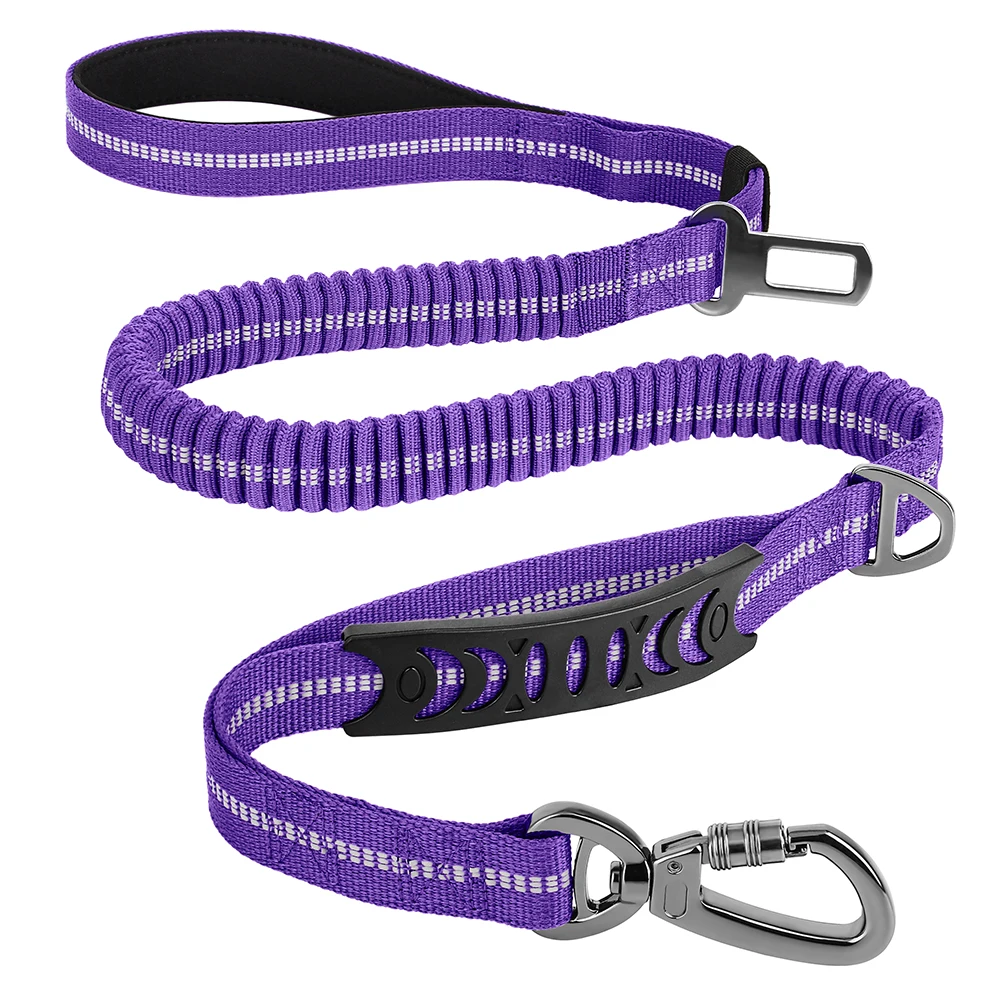
Pain Point: Puppies bolt, chew, or get tangled.
Solutions:
Material: Avoid chains or thin cords. Opt for:
Nylon or Biothane: Lightweight, chew-resistant, easy to clean.
Reflective Strips: Essential for evening walks (e.g., leashes with 360° reflectivity).
Length: 4–6 feet is ideal:
Shorter lengths (4ft) offer better control for training.
Avoid retractable leashes until your puppy masters loose-leash walking.
Attachment: Use a back-clip harness (not a collar) to protect their delicate neck.
| Training Need | Best Leash Type | Why |
|---|---|---|
| Loose-leash walking | Fixed-length nylon (6ft) | Prevents pulling; teaches consistent boundaries. |
| Recall training | Longline (10–15ft) | Gives freedom to explore while maintaining control. |
| Curbing chewing | Metal-reinforced leash | Withstands nipping (e.g., leather or double-layered nylon). |
| Public exposure | Traffic handle leash | Extra handle near the clip for quick control in crowds. |
Puppy’s Comfort:
Lightweight leashes (≤0.5 lbs) avoid overwhelming small breeds.
Padded handles prevent rope burn on your hands during pulls.
Your Comfort:
Bungee/shock-absorbing leashes reduce arm strain if your puppy lunges.
❌ Retractable leashes: Encourage pulling; can cause injuries if the cord snaps.
❌ Chain leashes: Heavy, cold, and harsh on puppy teeth.
❌ Too long/too short: >6ft reduces control; <4ft restricts movement.
Best Starter Leash:
Basic Nylon Leash (6ft, ⅜” width) with reflective stitching.
Example: Blue/Black reflective nylon leash with traffic handle.
For Chewers:
Double-layered nylon or Leather (metal clasp reinforcement).
For Training:
Adjustable Leash (4–6ft) with a bungee section to absorb tugs.
Q: When can I start leash-training my puppy?
A: Immediately! Start indoors at 8–10 weeks with short, positive sessions.
Q: My puppy bites the leash. How do I stop it?
A: Use bitter apple spray on the leash + redirect with a toy. Choose chew-resistant materials.
Q: Can I use a retractable leash?
A: Not until your puppy reliably follows commands (usually 6+ months).
Q: What width is safe for small breeds?
A: ¼”–⅜” for pups under 15 lbs; ½” for larger breeds.
Always pair the leash with a well-fitted harness (not a collar) to protect your puppy’s trachea. Introduce the leash gradually: let them sniff it, reward calmness, and keep early walks short and positive!
🐾 Final Checklist: Lightweight ✔️ Reflective ✔️ 4–6ft ✔️ Padded Handle ✔️ Harness-Compatible ✔️
By prioritizing safety and training needs, you’ll build confidence and make walks enjoyable for your pup!
Leave a comment